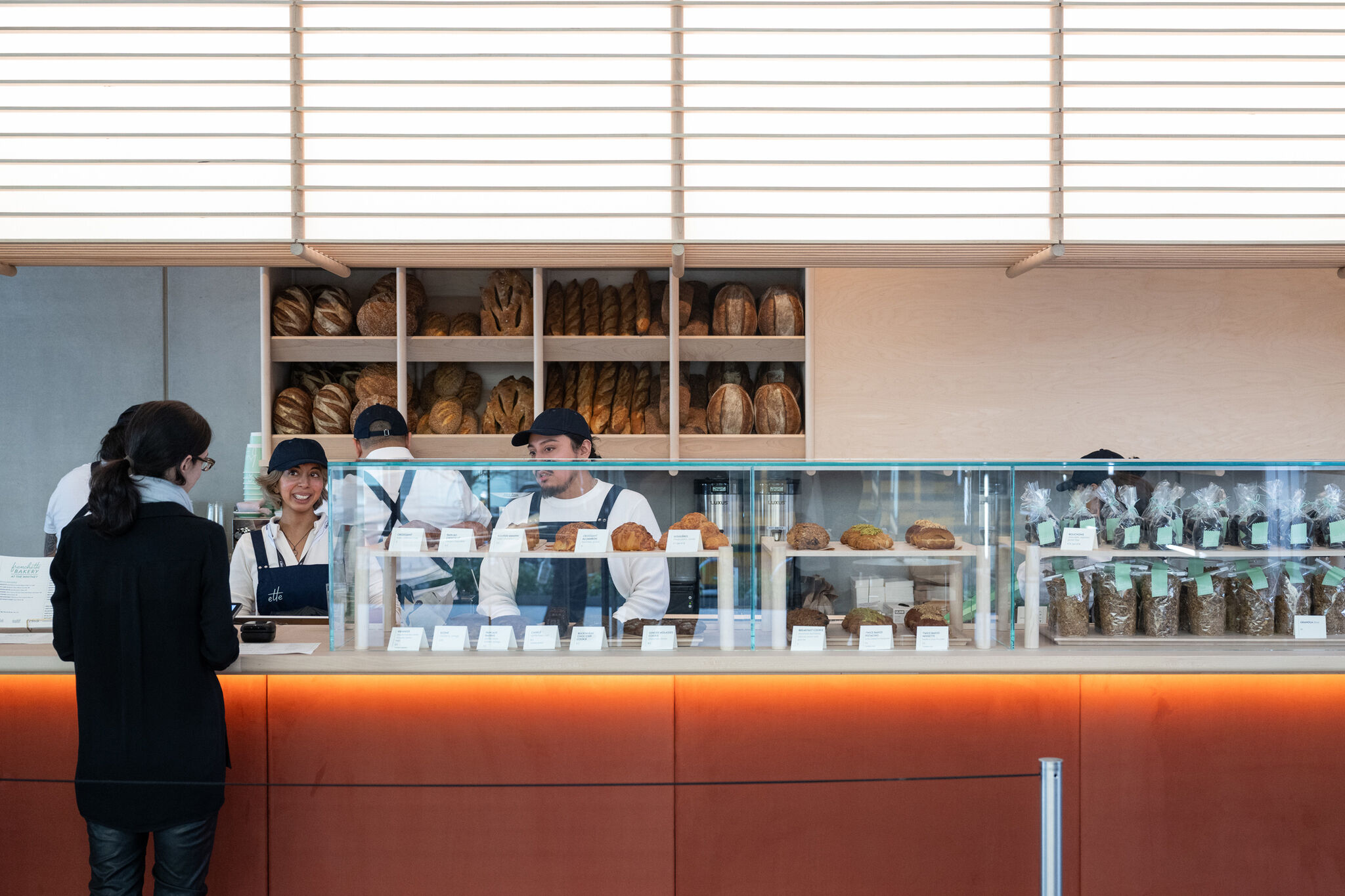Dyani White Hawk: Nourish
Dyani White Hawk: Nourish
On view
Floor 8
Nourish is located in the newly revamped Studio Bar.
Dyani White Hawk made this site-specific installation, Nourish, using thousands of handmade ceramic tiles. In her work, White Hawk draws from the long history of Lakota abstraction in beadwork, painting, and quillwork (a form of embroidery using porcupine quills). She also situates her work in dialogue with American Modernism and Abstract Expressionist painters such as Marsden Hartley and Jackson Pollock, who cited Native American art as an influence and yet were credited as some of the originators of American abstraction. White Hawk notes that her work "places Native arts front and center, to implore people to think critically about how we talk about intersections of our artistic histories and to honor the legacies and lineages of Indigenous women and relatives who have shaped the ongoing artistic history of this land."
For Nourish, White Hawk used colors rooted in Lakota bead and quillwork aesthetic traditions. The mosaic’s subtle shifts in color mimic gradients found in the natural world. White Hawk uses this palette to set what she calls an "emotional tone" for this space of rest, reflection, and nourishment.
Dyani White Hawk realizó Nutrir, instalación creada específicamente para este sitio, utilizando miles de azulejos de cerámica hechos a mano. En su trabajo, White Hawk se inspira en la larga historia de la abstracción lakota como la pedrería, la pintura y el quillwork (bordados con púas de puercoespín). También pone en diálogo su obra con el modernismo estadounidense y la obra de los expresionistas abstractos como Marsden Hartley y Jackson Pollock, quienes citaron al arte indígena estadounidense como influencia, y sin embargo fueron ellos los acreditados como los creadores de la abstracción estadounidense. White Hawk señala que su trabajo “sitúa a las artes nativas en un primer plano para invitar a las personas a pensar críticamente sobre cómo hablamos de las intersecciones de nuestras historias artísticas y para honrar los legados y linajes de las mujeres y familiares indígenas que han dado forma a la historia artística de esta tierra”.
En Nutrir, White Hawk utilizó colores arraigados en las tradiciones estéticas de la pedrería y el quillwork Lakota. Los sutiles cambios en el color del mosaico imitan los gradientes que se encuentran en el mundo natural. White Hawk utiliza esta paleta de colores para establecer lo que ella llama un “tono emocional” para este espacio de descanso, reflexión y nutrición.




